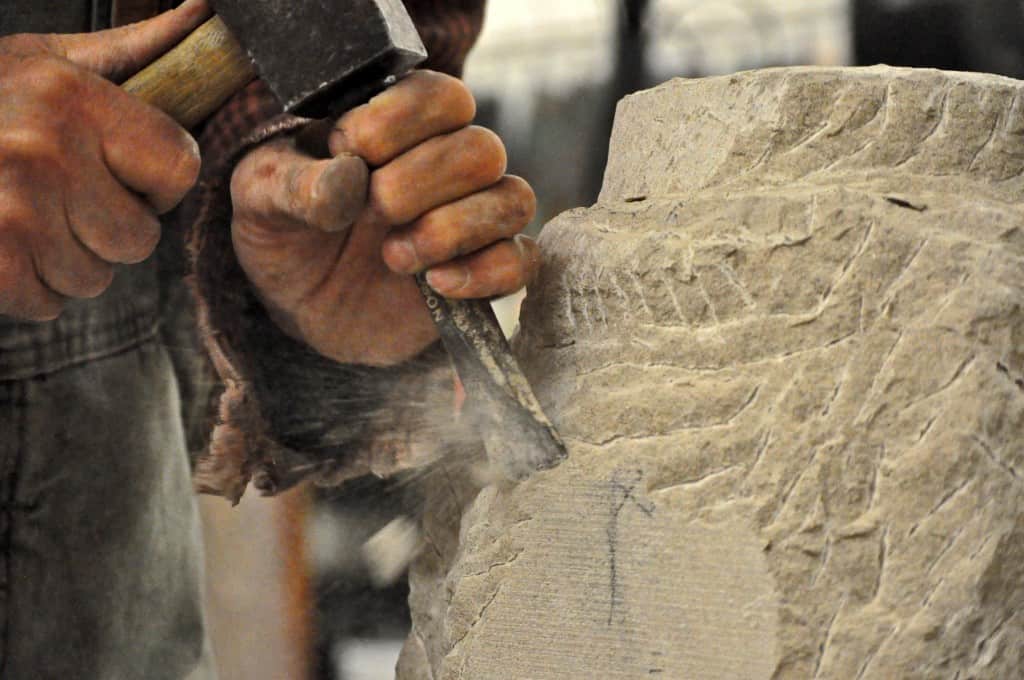We often say in the tradition that the Daoist way is one of removing, not adding. Yet the first thing we do is learn a million practices. So what do we mean by this?
It’s useful to remind ourselves that the exercises (and the way we exercise) are the tools we use to aid in accomplishing our task of removing. If we use them well, they will help us remove things effectively, but if we get too focused on them, we could end up with just a big, shiny collection of nice tools that we’ve never used.
What are we removing with these tools? We could label it tension, blockages, hidden habits, fear, stuck emotions, or belief structures. Or we could use older language and call them our demons, devils or evils. Whatever word we use to label them, the basic idea is they are hidden parts of us, both physical and non-physical, that bind us up and prevent our full potential from coming out, and get worse the longer they are left unattended.
The greatest trick the devil ever pulled was convincing the world he didn’t exist.
~Charles Baudelaire
Our psychology and culture wires us to really avoid confronting these aspects of ourselves, preferring to cover them over or pretend they aren’t there – this is normal human behaviour. Because it is normal, we need to do something abnormal and interrupt our lives to engage with a specific Way with specific practices which will entice the hidden out of hiding:
The practice is artificial, it amplifies the internal to allow us to resolve it. Constraints force the evil to come out.
~Serge Augier
Our way of practice comes with a huge array of constraints. We have to practice every day, doing all these difficult things where we stay in one practice for a long time. We have to move only this part and not that part. We have to breathe in this particular way, or focus on a particular way. I could go on, but you get the picture. These constraints that come with the practice force our hidden issues out of hiding, force the devils to reveal themselves so we may find resolution with them.
It’s like restoring an old car, you have to pull it apart and strip everything back to bare so you can reveal all the rust and sort it out. Even if you have to learn how to use your tools, what you’re aiming for is mostly an act of removal – scrubbing back the external layers to reveal the hidden rust. Sometimes you find some light surface rust and you just keep scrubbing and it will go away, other times you will discover a huge mess and have to change to a grinder to cut big parts away. Some cars will have more and heavier rust to remove, requiring many elaborate tools, others only have a relatively small amount needing simple attention. Different tools will work better in different circumstances and at different stages. You might want to work the polish after you’ve put that final layer of gloss coat on the car, but just because the polish goes on near the end and you’re good at polishing things does not at all mean it’s a good idea to do it in lieu of your initial efforts of scrubbing.
In the same way, our practice is simply a process, one that’s best done in a particular order making use of particular tools at particular times based on the individual context. The tools aren’t better or worse than each other, they just each do something specific. Adding tools to your repertoire has its place, but we have to know if/when to use them and when to put them down to move on to something more appropriate to the stage we’re up to.
Don’t confuse collecting the tools with putting in the work to scrub everything back to bare and reveal what’s hiding underneath. You’d be surprised what you can get done with a few good, basic tools and a little bit of elbow grease…

